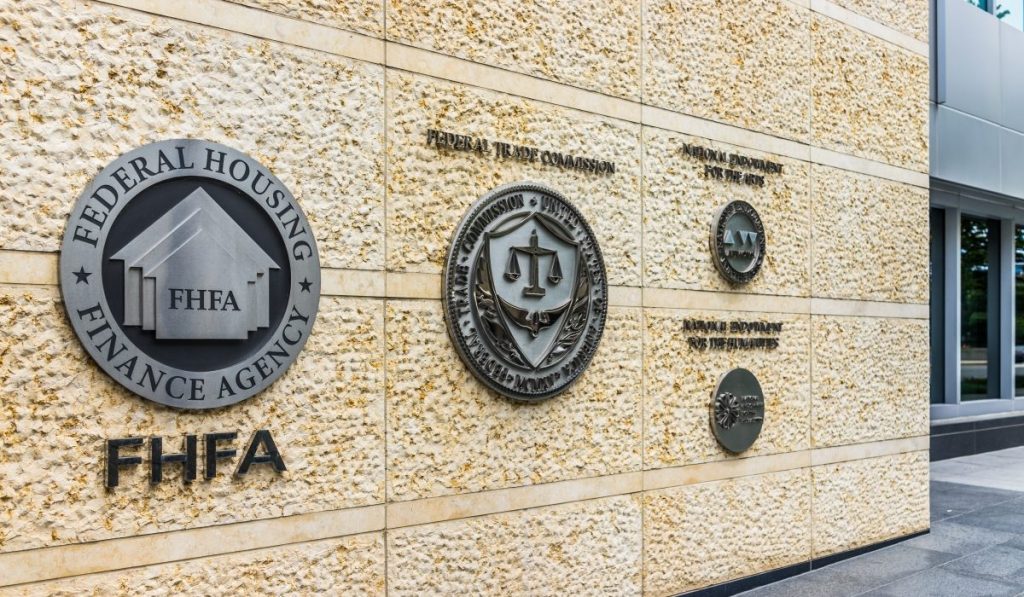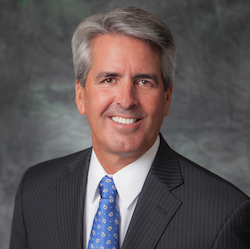On May 13, FHFA Director Mark Calabria wrote an op-ed published in the Wall Street Journal defending the final ‘living wills’ rule published in the Federal Register on May 4. The key to this op-ed is understanding what was left out. His clear disdain for the structure of the GSEs as well as their ability to absorb risk is made clear, but there are critically important points in the rule that he carefully avoided in his op-ed.
The final rule is a meaty one, taking into account the feedback from 12 comment letters that FHFA received, mostly from trade groups, consumer advocates, and think tanks.
What is really amazing is that you might think that industry would have learned their lesson after the release of the PSPA Amendment in January that snuck in several provisions adverse to the housing sector. This January amendment, you may recall, put the cap on sales of second homes and investor properties, limits to the cash window, caps on multifamily, and limits on sales that include a combination of borrower attributes.
But here we go again. The proposed ‘living wills’ rule received only a handful of thoughtful comments, but the final rule essentially listened to and subsequently ignored the vast majority of them. So where is the outcry? Why aren’t stakeholders responding to yet another action that may show the blueprint for Director Calabria’s intentions?
But silence prevails. Despite the concerns about liquidity following the CARES Act forbearance requirement and the cost to servicers, the first payment forbearance 500/700 bp fees that quickly caused pricing adjustments, the 50 basis point refinance fee, and the items in the January PSPA referenced above, industry largely has kept their concerns constrained. But why?
How new GSE guidelines will push more borrowers to non-QM
New GSE guideline updates to Fannie and Freddie forces them to cap the amount of second home and investor properties delivered at 7%. This means a meaningful amount of supply will have to come to the non-QM Sector.
Presented by: Acra Lending
The industry should trust a person by what they say. And What Director Calabria has said for many years is that these companies are too big, that they crowd out private capital, and that they pose way too much taxpayer risk and need to be dealt with.
The FHFA Director has sole authority, requiring no approval from either Congress or Treasury, to put the GSEs into receivership or into successor entities. In fact, Calabria stated this himself in an interview in May of 2020. In this interview he stated it clearly, “Endless limbo is not an option under statute. FHFA has the power and the responsibility to end the conservatorships of the GSEs. Congress authorized FHFA to do this by either reconstituting the GSEs into a successor entity or entities, restoring them to a position of financial stability and shareholder control, or placing them in receivership. HERA does not require congressional action to end the conservatorships.”
Given what is widely believed to be frustration that he could not accomplish a final solution while Secretary Mnuchin was heading the Treasury Department, he appears to now be looking at the authorities he has if choosing to act alone.
So, if you have not read the final rule, I encourage you to do so. But assuming you won’t, let me give you the highlights:
1. The ‘living wills’ are being required in order to establish a plan for moving the GSEs into receivership should they be unable to back the risk/obligation to support MBS Investors.
As the rule states: “FHFA is also authorized to appoint itself as conservator or receiver of an Enterprise if statutory grounds are met. When appointed receiver of an Enterprise, FHFA must establish a limited-life regulated entity (LLRE), which immediately succeeds to the Enterprise’s federal charter and thereafter operates subject to the Enterprise’s authorities and duties.”
This point about LLREs is important, because the term “limited life” is a key element that sets a timeline for the new companies to become fully capitalized and IPO’d before they statutorily would simply be shuttered.
2. One of the key elements here is the discussion of getting enough capital so as to avoid the necessary trigger to be put into receivership in the first place.
Unfortunately, despite pushback in comments made to the proposed rule, the line of credit in the PSPA cannot be considered as a resource, even for an interim period. In other words, once the ‘living wills’ are completed and submitted and approved, the risk of an FHFA action could become real as it is virtually certain that they would not meet the resource requirement without the PSPA support in the short run.
As the final rule states clearly: “Each Enterprise would be prohibited from assuming that any extraordinary support from the United States government would be continued or provided to the Enterprise to prevent either its becoming in danger of default or in default.”
Given the way the rule is written, it would be plausible for the director to exercise his authority fairly quickly. In fact, the final rule states this clearly, “FHFA will require the Enterprises to develop ‘credible’ plans to facilitate their ‘rapid and orderly resolution’ by FHFA as receiver.”
3. One other element of concern in the final rule.
The rule states the following: “The Enterprise resolution planning process will begin with identification of an Enterprise’s ‘core business lines’ (CBLs) – those business lines of the Enterprise that plausibly would continue to operate in the LLRE, considering.”
There is extensive discussion in the final rule of what would be included, but the risk here is enormous. While the GSEs will submit their definition of CBLs, it will need to comply with the framework in the rule that any CBL “supports” the proposed CBL definition listed “servicing, credit enhancement, securitization support, information technology support and operations, and human resources and personnel.”
Because the move into receivership to create successor entities would be limited to CBLs only, many questions are arising. Do some unique programs like early funding (ASAP), the cash window, and some expanded product, among many other functions, fit the definition of CBL?
For example, the rule states: “Finally, FHFA agrees that an Enterprise is not responsible for continuation in business of third parties that provide associated supports.” This should be an indicator of what may be admitted in a ‘living wills’ plan. One final note, the rule states clearly that FHFA will have final say in determining what can fit as a CBL in the “living wills” regardless as to what the GSEs submit.
There have been a number of policy leaders who have published concerns about the FHFA since Mark Calabria came in as director. The warning signs are not just idle concern. Calabria has shown his objectives from the beginning. Now, with the time left in his term waning — given the likelihood that the administration would likely want him gone — one has to ask whether he might rush the development of the these wills despite allowing for up to two years to do so.
In fact, just days ago the director gave a speech at the Brookings Institute where he suggested that the timeline could be much faster, as soon as six months.
So, the cautionary tale here is that he had shown us where he is going long before he came into the role at FHFA. But this process, which does not allow for the use of the PSPAs as a resource, shows that, at least in the short run, the GSEs will be well short of the capital needed to survive.
FHFA again made its perspective clear in the rule, stating: “FHFA believes it would be inconsistent to allow the Enterprises to factor into their resolution plans – plans that are premised upon some future adverse event – any remaining PSPA support that might exist today.”
Could capital alone be enough to take action under his sole authority as FHFA director and execute a process to submit the GSE’s to receivership status, thus forcing the creation of LLREs who can only operate with CBLs? What would MBS investors think and how would they behave? How would lenders and ultimately borrowers be impacted?
One thing that is clear is that this FHFA believes that the private sector can pick up a lot more of the GSE space, whether it be second homes, investor properties, cash window loans and more. Why wouldn’t he try to finish the job he started before he is forced out by the Biden Administration? That is the question.
This column does not necessarily reflect the opinion of HousingWire’s editorial department and its owners.
To contact the author of this story:
Dave Stevens at dave@davidhstevens.com
To contact the editor responsible for this story:
Sarah Wheeler at swheeler@housingwire.com






